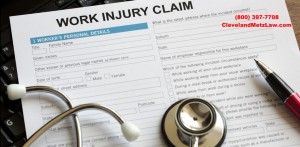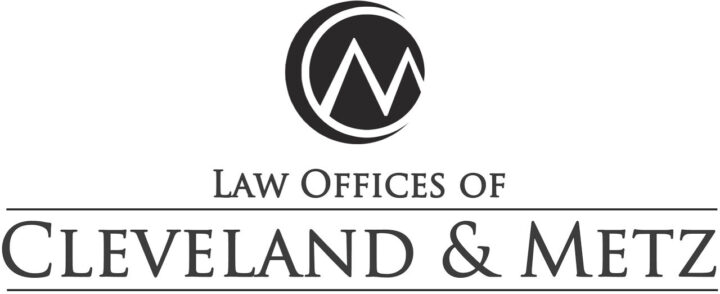What Types of Benefits are Available for Workers’ Compensation in California?
What Types of Benefits are Available for Workers’ Compensation in California?
There are six types of workers’ compensation benefits in California. This article explains Workers’ Compensation California benefits, what they are and how they work.
Total Temporary Disability (T.T.D.)
Total Temporary Disability benefits are payable when you are not able to do any type of work or when you are able to work only under temporary restrictions which your employer cannot provide. For example, the doctor says you can go back to work, but you have to sit down for fifteen minutes out of every hour, and your employer will not allow you to return on that basis. You would then be eligible to continue receiving T.T.D. if the restriction is temporary.
able to work only under temporary restrictions which your employer cannot provide. For example, the doctor says you can go back to work, but you have to sit down for fifteen minutes out of every hour, and your employer will not allow you to return on that basis. You would then be eligible to continue receiving T.T.D. if the restriction is temporary.
Temporary disability is paid at the rate of two-thirds of your average weekly earnings (A.W.E.). The maximum average weekly earnings considered varies, depending on the date of your injury. For injuries after January 1, 2008 the benefit rate is $916.33. For injuries in 2009, the maximum rate goes up to $958.01 and for 2015 it is $1103.29.
If two-thirds of your earnings is more than the maximum you will only receive the maximum benefit rate for your injury year and no more. You are not entitled to T.T.D. if your employer has work that you can do and offers that work to you. For instance, if they find a sitting job for you when you cannot work on your feet, so long as this meets the doctor’s approval, then you would not be entitled to temporary disability benefits.
Total temporary disability should not be confused with S.D.I. or State Disability Insurance. Both benefits are referred to as “disability” but State Disability Insurance does not require that your disability be work-related. It is paid by the Employment Development Department (E.D.D.) of the State of California. Workers’ Compensation Benefits are payable by an insurance company for your employer or an administrator on behalf of your employer if your employer is self-insured.
Vocational Rehabilitation Maintenance Allowance (V.R.M.A.)
Because of workers compensation reform in 2004 in SB 899, this benefit is no longer available.
Temporary Partial Disability (T.P.D.)
If you are partially temporarily disabled (for instance if your doctor allows you to work for four hours rather than eight hours per day) than you are entitled to benefits proportional to your temporary disability. If your partial employment pays you less than the weekly maximum or less than your previous average weekly earnings, then you are entitled to two-thirds of the money you have lost (the difference between what you make now and what you made before).
Permanent Partial Disability (P.P.D.)
Permanent partial disability payments are often referred to as PDA’s or permanent disability advances.  Permanent disability is calculated after you have become permanent and stationary (reached maximum medical improvement) and are able to return to work with some limitations. If you have no limitations, you are not entitled to any permanent partial disability. Usually there is a dispute as to the amount of permanent partial disability which is not resolved until the end of your claim. However, it often happens that it is agreed that you have some permanent partial disability and only the amount is in dispute. There are two types of permanent disability advances.
Permanent disability is calculated after you have become permanent and stationary (reached maximum medical improvement) and are able to return to work with some limitations. If you have no limitations, you are not entitled to any permanent partial disability. Usually there is a dispute as to the amount of permanent partial disability which is not resolved until the end of your claim. However, it often happens that it is agreed that you have some permanent partial disability and only the amount is in dispute. There are two types of permanent disability advances.
If you are not totally temporarily disabled, but have some permanent disability, then you are entitled to permanent disability advances in a scheduled amount which varies according to the date of your work injury.
The number of weeks for which you receive that amount is determined by the percentage of disability that you have. After January 1, 2005, however there is another complication. Once your Permanent Disability has been evaluated, there are now several different amounts that you might receive for the same percentage of disability, depending on whether your employer has more or less than 50 employees and on whether or not your employer offers you a job after you are able to return to work.
If your employer has more than 50 employees and if he does not offer you a job to return to within 60 days of becoming permanent and stationary, then each payment of PD after that will be increased by 15%. The job offered has to last for 12 months. However, if your employer does offer a job (regular work, modified work or alternative work) then your payment is reduced by 15%. Modified and alternate work are required to pay at least 85% of your wages at the time of injury. This section does not appear to be limited to employers of over 50 employees. If your work is terminated by the employer while you are still receiving PD payments, then the 15% is added back into your payments. You don’t get this increase if you quit or if your employer has fewer than 50 employees.
For injuries after January 1, 2013, permanent disability is paid at a flat rate and there is no longer a 15% adjustment.
Total Permanent Disability (T.P.D.)
Total permanent disability is rare. That benefit is paid at the temporary disability rate for life. Total permanent disability is 100% disability. Certain conditions such as the loss of use of both arms or the loss of use of both eyes are presumed to be 100% disability. If you are 99.75% disabled, you are not 100% disabled and you will receive permanent disability advances as described above.
Death Benefits
Death benefits are paid to your dependents if you die of your work injury. They will be the subject of a separate article.
When are benefits supposed to be paid?
Workers’ compensation benefits are to be paid every fourteen days. If they are paid late the insurance company is supposed to automatically increase the amount of the payment by ten percent. If your payments are mailed to the correct address every fourteen days, the insurance company is not responsible for a penalty. They will not be held responsible for problems with the U.S. Postal Service or the security of your mail box. I recommend that you save every envelope in which you receive checks and check the post mark to be sure that they are no more than fourteen days apart. Ideally you should save a copy of the check as well.
Some insurance companies include check stubs which tell the date the check was issued, the amount and what period it covers. You should definitely save all of these. If there is no stub and it is possible for you to do so, I recommend that you make a copy of the check before you deposit it or cash it. If you cannot copy it you should at least record the date of the check, the amount, and the dates covered by the check.
